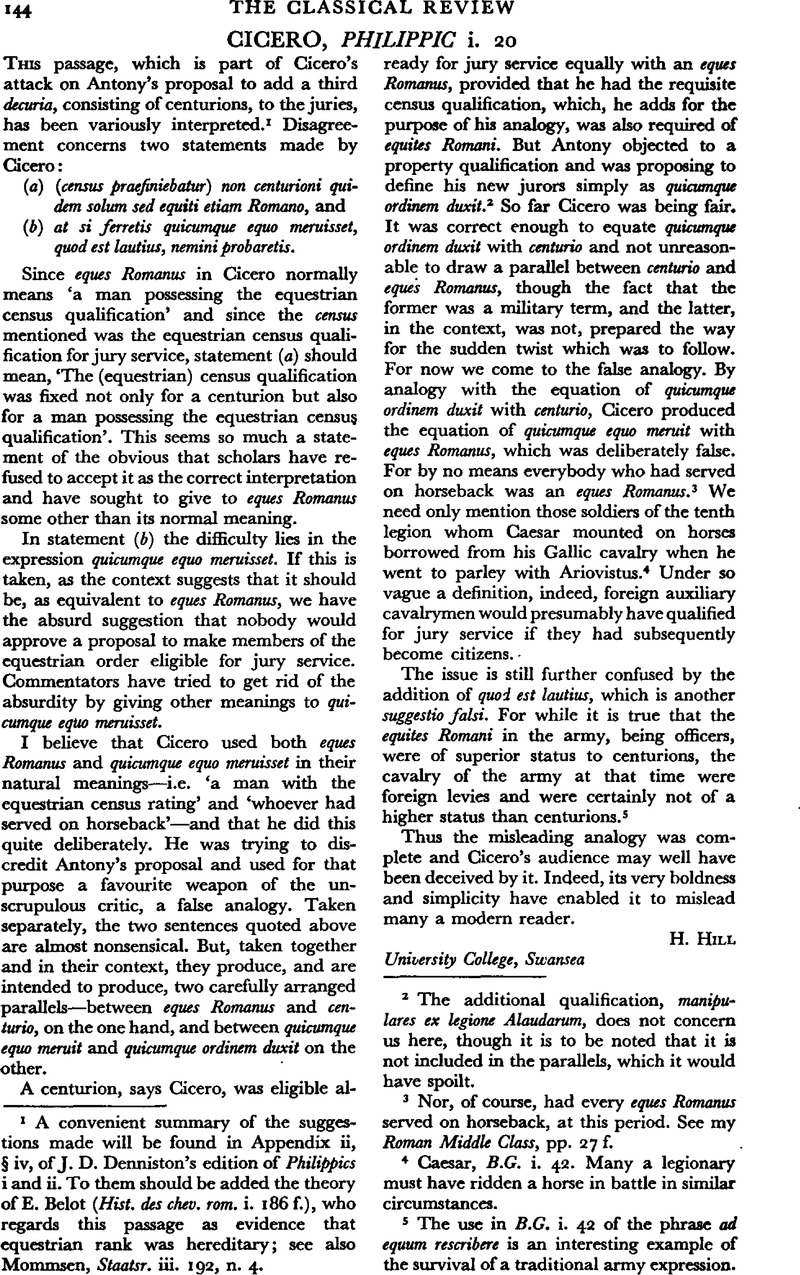No CrossRef data available.
Article contents
Cicero, Philippic i. 20
Published online by Cambridge University Press: 13 February 2009
Abstract

- Type
- Review Article
- Information
- Copyright
- Copyright © The Classical Association 1955
References
1 A convenient summary of the suggestions made will be found in Appendix ii, § iv, of J. D. Denniston's edition of Philippics i and ii. To them should be added the theory of E. Belot (Hist, des chev. rom. i. 186 f.), who regards this passage as evidence that equestrian rank was hereditary; see also Mommsen, Staatsr. iii. 192, n. 4.
2 The additional qualification, manipulates ex legione Alaudarum, does not concern us here, though it is to be noted that it is not included in the parallels, which it would have spoilt.
3 Nor, of course, had every eques Romanus served on horseback, at this period. See my Roman Middle Class, pp. 27 f.
4 Caesar, B.G. i. 42. Many a legionary must have ridden a horse in battle in similar circumstances.
5 The use in B.G. i. 42 of the phrase ad equum rescribere is an interesting example of the survival of a traditional army expression.


